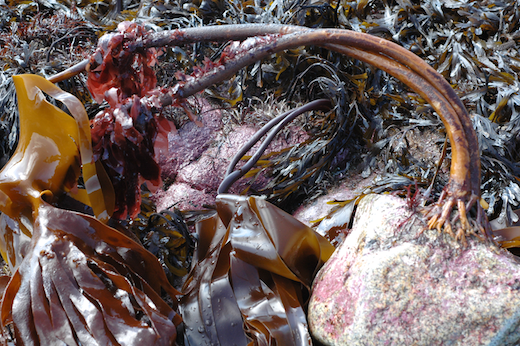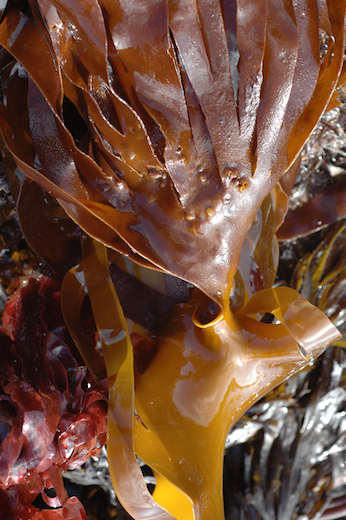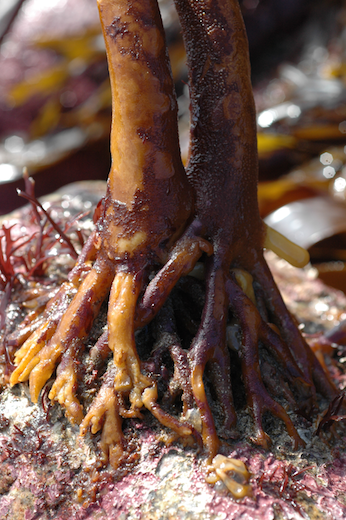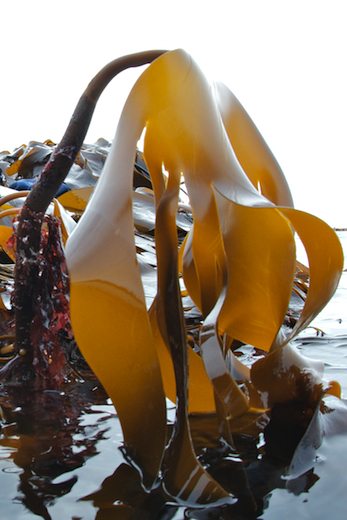Laminaria hyperborea (Gunnerus) Foslie
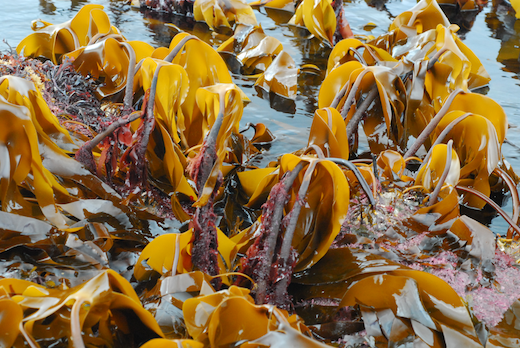
Names: formerly known as Laminaria cloustonii. Leathnach, Feam, Scotach (Irish).
Description: Dark brown, to 2 m in length; with a claw-like, conical holdfast, a rough, rigid stipe which generally sticks up out of the water, and is covered in epiphytes when older, and a laminate blade to 1.5 m long dividing into finger-like segments.
Habitat: Common at extreme low water in wave-exposed areas, and in the subtidal in optically clear water growing on rock to a depth of 32 m. Forms extensive closed communities at depths of 0-24 m.
Distinguishing features: Stipe is rugose (rough) when older, circular in crossection, and snaps easily when bent; the holfast is conical (below, right); there are usually lots of ephytic red algae growing on the older stipes, particularly Palmaria palmata (below); the old fronds are cast off in spring and new ones grow below for a time (below, left); in Laminaria digitata the plants are darker in colour, the stipe is generally shorter, narrower. In Saccharina latissima (formerly Laminaria saccharina) the blade is undivided and has regular, small depressions
Distribution: All coasts of Britain and Ireland.
Usage: Dredged in Norway for alginate production, in Ireland cast-up stipes used to be collected for alginate production in Scotland but collection has ceased in reent years. "Feam" in Irish is a rod, and forms the stem for Irish word for seaweed, feamainn.
